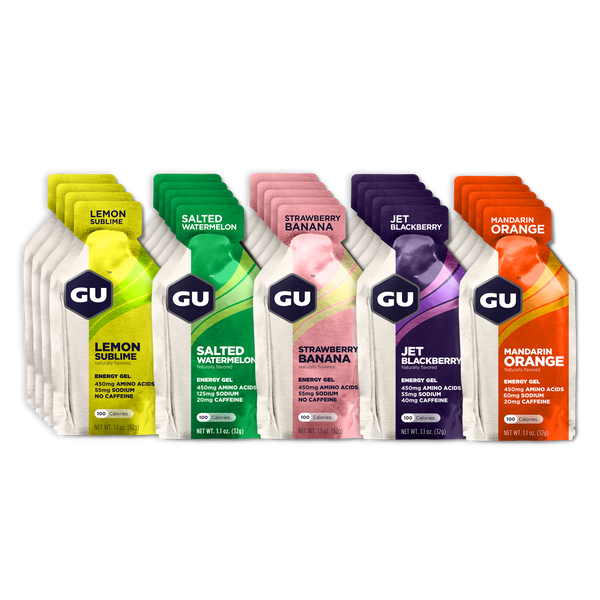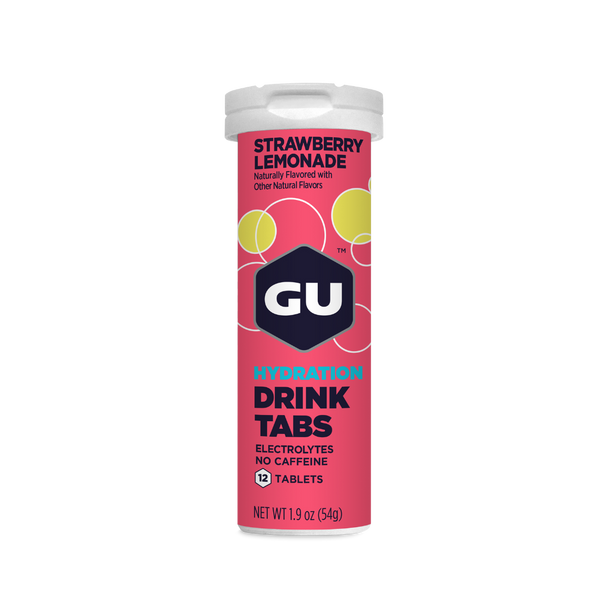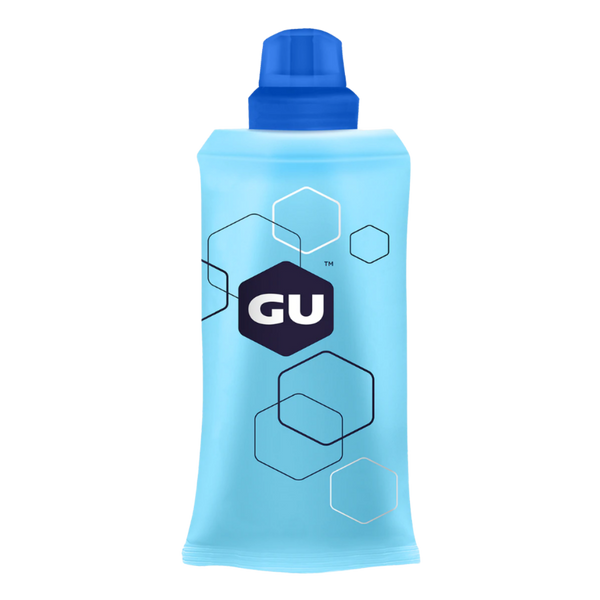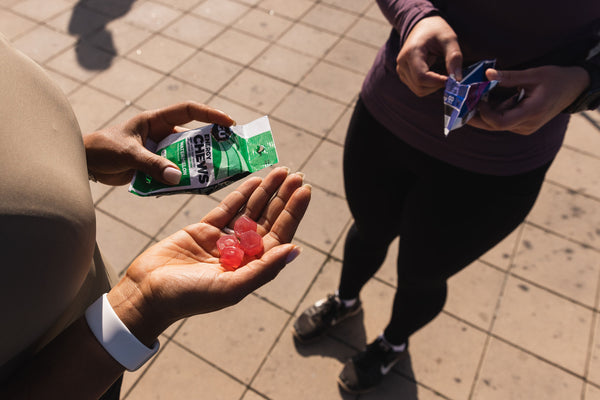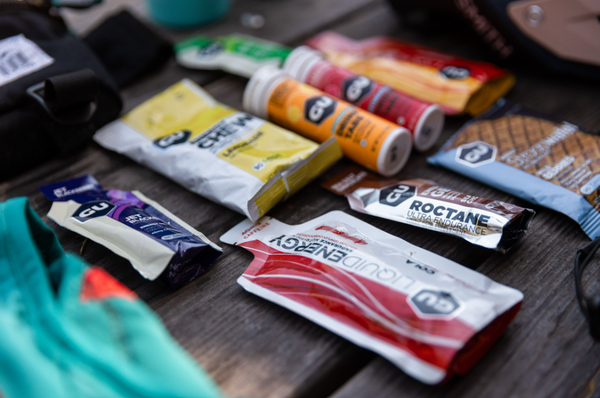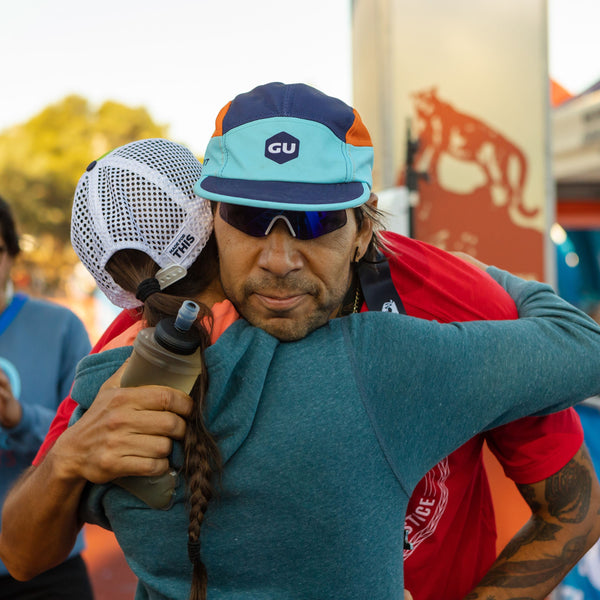In the age of FKTs and breakthrough performances like the recent Sub7/Sub 8 project, it seems that records are made to be broken and that limits are merely obstacles to be overcome. When pursuing an audacious athletic goal, athletes need to push beyond what’s physically possible today. They put in the hours, fight through discomfort, and at times even question their motivation to continue. Like most athletes, you’ve probably experienced the feeling of running up against your limits. That muscle-quaking, lung-burning, heart-racing sensation that foretells the end is near. But it isn’t really, is it? For as much as sports scientists have learned about human performance over the past several decades, we still have much to understand about pushing our physiological limits.

What Limits Human Endurance?
If you ask most athletes and coaches, they’ll probably tell you it’s the onset of fatigue that limits us. Fatigue can be described as “An acute impairment in performance that includes both an increase in the perceived effort necessary to exert a desired force and the eventual inability to product this force.” ref But where does fatigue originate from during exercise? Do our muscles limit us? Is it all in our brains, or perhaps even a matter of motivation? Some combination of both? And how might we safely overcome some of these limitations?

Fatigue
For a long time, the prevailing theory held that muscular fatigue was the limit to human endurance, a result of insufficient oxygen delivery to cover metabolic demands that ultimately reduces force production. However, researchers studying the point of exhaustion in athletes have observed that there always seems to be a little bit left in the tank.
In one study researchers found by taking biopsies of cyclists’ thigh muscle that enough ATP (adenosine triphosphate, the energy currency of the cell) was left in the muscle to provide energy for another seven to eight minutes of exercise at the athletes’ maximal output. In other words, even though they’d given it their all, these cyclists still had plenty left in reserve to push harder.
Such findings certainly corroborate the phenomenon observed at the end of races when athletes who have seemingly pushed themselves to the max can still finish with an impressive sprint across the finish line, or “final kick.” If you’ve ever seen the Western States Endurance Run, the world’s oldest 100-mile trail race, this plays out with a painful final lap around the Placer High School track where it’s not uncommon for runners to sprint past competitors after running more than 99 miles.
Pacing data among elite athletes demonstrate a change in pace at the end of a competition can be attributed to the anticipation of the remaining output required to finish the event and the athletes’ rating of perceived exertion in the moment. In other words, athletes make pacing decisions—whether to speed up or slow down—based on how hard they feel they are working and how much longer they have left in the race. And this decision may ultimately be a protective mechanism to keep them from the complete collapse that would occur in the case of total exhaustion.

Causes of fatigue
Lactate accumulation
Exercise imposes a significant stress on the body, stimulating the central nervous system and upregulating several physiological responses to maintain homeostasis. This involves a coordinated response from the lungs, heart, and blood vessels, in addition to the working muscles. The increased need for oxygen and nutrient delivery determines the magnitude of the response, from maintaining a casual stroll all the way up to your maximal effort. The lungs go from exchanging 12 L of air per minute at rest up to about 100L per minute during exercise. Similarly, the heart, which normally circulates about 5 L of blood per minute at rest, increases its output four-fold to match the muscles’ increased oxygen demand. And that demand comes at a cost. With increasing intensity, blood lactate levels rise, indicating the transition to greater reliance on glycolysis—the breakdown of glucose—to produce energy for muscular contraction. The point at which lactate accumulation rises exponentially indicates the inability for aerobic respiration and fatty acid breakdown to keep pace with energy needs. Referred to commonly as lactate threshold (LT), the onset of blood lactate accumulation, or maximal lactate steady state, this is the point beyond which endurance becomes limited and fatigue rapidly sets in, requiring either a reduction in effort or temporary cessation of activity to recover. Fortunately, you can train to increase the exercise intensity at which this threshold occurs, from 65% maximal aerobic capacity (VO2max) in less fit individuals up to about 95% VO2max in elite athletes. Lactate handling and clearance can be improved by strategically training at or near the LT through threshold interval training, improving overall fatigue resistance at higher exercise intensities.
Glycogen depletion
Another well studied cause of fatigue results from diminished carbohydrate (blood glucose) availability, caused by glycogen depletion. Sometimes referred to as “hitting the wall” or “bonking” this happens when insufficient carbohydrate is available either from stored sources—muscle and liver glycogen—or exogenous sources, which are the carbohydrates you consume before and during exercise. Since the body can only store about 1,500 to 2,000 Calories’ worth of carbs at any given time, the supply of energy is rather limited. Without consuming additional carbohydrate, moderate intensity exercise can only be maintained for a few hours, an even less than that if you’re working at a high intensity. And while this this limitation seems to have an easy fix (eat carbs during exercise…more GU, anyone?) it’s worth noting that simply mouth rinsing with carbohydrate can extend shorter duration (e.g., 30-60 min) high intensity endurance performance by 2-3%. In these shorter duration activities, glycogen depletion shouldn’t be a limiting factor, yet oral sensing of carbohydrate seems to signal to the brain that additional energy is on the way, allowing tired muscles to produce more power. So, if it’s not the muscles, is the limit all in your head?

Mental fatigue
Physiologist Samuele Marcora’s psychobiological model of fatigue posits that endurance tests and competitions are self-regulated behaviors, and that there is a psychological component to performance closely tied to one’s perceived effort. He suggests that an athlete’s perception of effort (RPE) increases over time despite no change in power output, due to fatigue and that the mind is ultimately responsible for either hitting the gas or pumping the brakes when the going gets tough. Marcora points to research on mental fatigue to support his hypothesis. He found that completing high intensity exercise after 90 minutes of a mentally fatiguing computerized task increased perceived effort and reduced time to exhaustion by 15% (nearly 2 minutes) in cyclists pedaling at 80% of their maximal power output. Other studies also showed that subliminal visual cues of happy versus sad facial expressions or encouraging “action words” can similarly impact performance and perceived effort. The takeaway here is that positive visual and verbal cues can extend time to exhaustion by lowering an athlete’s RPE. Based on Marcora’s research, he recommends a few strategies for pushing the limits, including:
- Avoid mentally draining activities before competitions. Race week is not the time to do your taxes.
- Reduce your psychological load, including emotionally charged situations, which can be mentally fatiguing.
- Use positive self-talk. Phrases like, “Hang in there,” “You can do it,” “Push it,” and so on can improve motivation and overall performance.
- Caffeine is a performance enhancing aid that reduces perception of effort, requires less central drive to initiate movement. Pre-event doses of 3-6 mg per kilogram body weight are recommended based on lab research.
The ultimate limit of human endurance
Up to this point, our focus has been on the type of fixed endpoint endurance efforts many of us have or will encounter, including events lasting several minutes to several hours. But for the multi-day races, the mountain expeditions, the military campaigns requiring days, weeks, even months of toil, what is the ultimate limit to human endurance? In 2019, scientists believed they found the answer, and it all comes down to your gut. A group of researchers followed runners completing the Race Across the USA on foot, running on average a marathon per day, six days a week, for five months. Scientists measured the runners’ energy expenditure at various points during the race and found that when they compared the caloric expenditure to other extreme endurance efforts, like polar exploration, the Tour de France, even pregnancy, all of them seemed to converge on one value: Two and a half times resting metabolic rate.
What does that mean, exactly? Resting metabolic rate is the amount of energy required to “keep the lights on” so to speak, in a healthy human being. For average adults, that equates to about 1,600 to 2,000 Calories per day, not including exercise or any other physical activity such as manual labor, walking up and down the stairs, or stretching. It’s the minimum amount of energy required to remain alive.

The interesting thing the researchers discovered is that no matter what the extreme effort seemed to be, or the total duration (from multiple days in the case of ultramarathons to nine months for pregnant mothers), the limit to what could be sustained indefinitely was the same, roughly the equivalent of about 4,000 to 5,000 Calories per day. Beyond that, it seems we simply cannot replace the Calories to keep pace with energy expenditure. Now, of course, there are events that require more than this amount in a single day, including 100-mile foot races (~10,000-12,000 kcals), but to be sustainable indefinitely, the human body has to be able to replenish its energy needs, or else it begins to break down. The researchers concluded that this limit of 2.5 times resting metabolic rate likely has to do with the gut’s ability to extract and absorb nutrients from food. In other words, you only have so much room in the tank. There you have it, the ultimate limit to human endurance is our gut’s ability to absorb nutrients. We simply must be able to feed ourselves in order to endure.
Take Home Message
If you’ve made it this far, kudos to you. It’s a true testament to the endurance of your attention span. In all seriousness though, pushing the limits has its limits, and our ability to extend athletic performance over a long time is limited by multiple factors, including our brain, our body, and ultimately, by our ability to absorb nutrition. What’s the takeaway? Train strategically, fuel for performance, say nice things to yourself, and make sure you eat enough to meet your energy needs.





